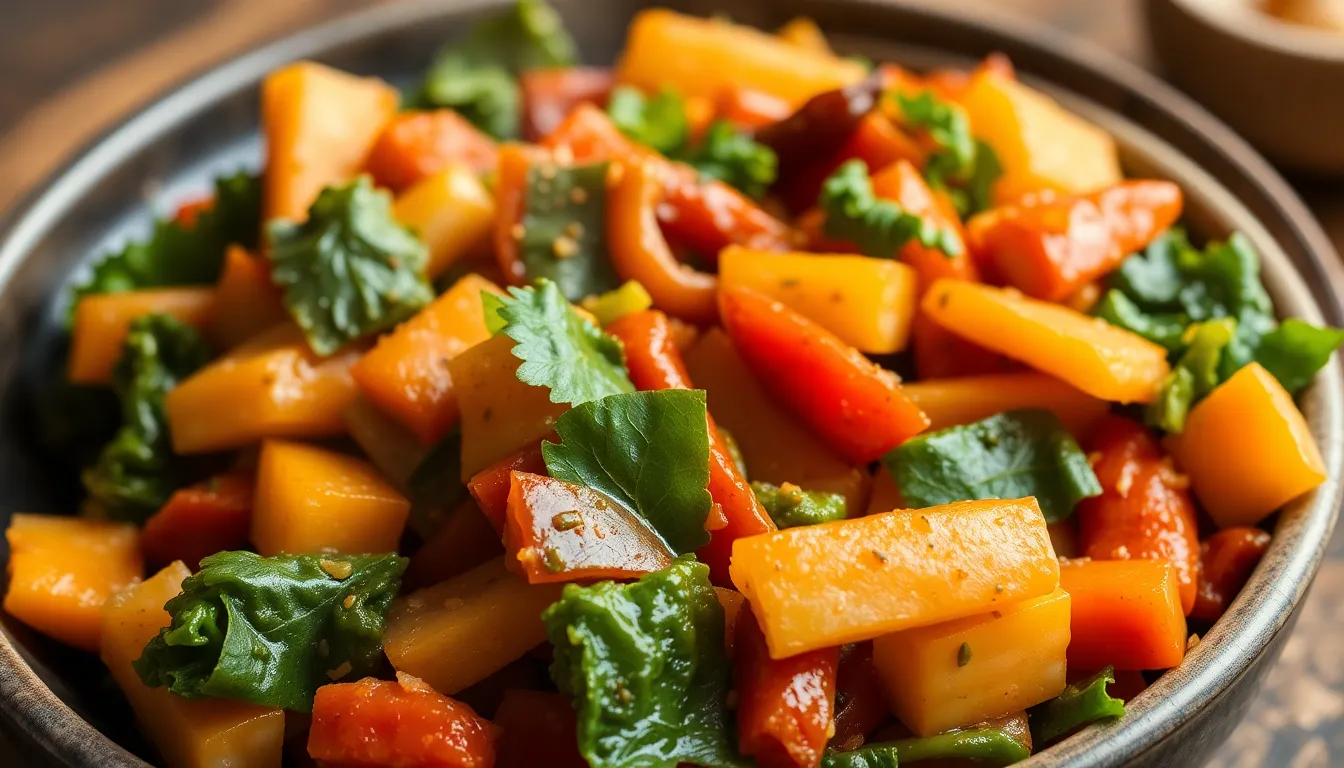How to Make a Vegetable Stir-Fry That Packs a Punch
Vegetable stir-fry is a vibrant and flavorful dish that has made its mark in kitchens worldwide. With its origins rooted in Asian cuisine, this dish celebrates the natural flavors of fresh vegetables, all while providing a quick and nutritious meal option. Incorporating vegetables into your meals not only adds essential nutrients but also brings color and variety to your plate. The versatility of a well-made stir-fry means that you can customize it with different vegetables, proteins, and sauces, allowing for endless culinary creativity.
Section 1: Choosing Your Vegetables
1.1 Seasonal Vegetables
Choosing seasonal vegetables is key to achieving the best flavor and nutritional value in your stir-fry. Seasonal produce tends to be fresher, more affordable, and environmentally friendly. Here are some seasonal vegetables to consider:
- Asparagus
- Peas
- Spinach
- Bell Peppers
- Zucchini
- Corn
- Broccoli
- Cauliflower
- Carrots
- Kale
- Brussels Sprouts
- Squash
Below is a chart of seasonal vegetables to help you choose the best options:
| Season | Vegetables |
|---|---|
| Spring | Asparagus, Peas, Spinach |
| Summer | Bell Peppers, Zucchini, Corn |
| Fall | Broccoli, Cauliflower, Carrots |
| Winter | Kale, Brussels Sprouts, Squash |
1.2 Color and Texture
When preparing your vegetable stir-fry, consider the visual appeal of color. A mix of vibrant hues not only makes the dish more appetizing but also indicates a variety of nutrients. Additionally, mixing different textures can enhance the eating experience. Pairing crunchy vegetables like bell peppers or snap peas with softer ones such as mushrooms or zucchini creates a satisfying bite that keeps every mouthful interesting.
Section 2: Preparing Your Ingredients
2.1 Washing and Cutting Techniques
To start off, it’s important to wash your vegetables properly to remove any dirt or pesticides. Use cold water and a vegetable brush for firmer produce. For leafy greens, rinse in a bowl of cold water and then dry using a salad spinner or a clean kitchen towel.
When it comes to cutting techniques, uniform sizes are essential for even cooking. Here are some cutting methods to consider:
- Julienne: Thin, matchstick-like strips ideal for carrots and bell peppers.
- Chop: Roughly cut into bite-sized pieces for more fibrous vegetables like broccoli and cauliflower.
- Slicing: Thinly slice vegetables like mushrooms or zucchini to ensure they cook quickly.
2.2 Marinating and Seasoning
No stir-fry is complete without a robust flavor. A quick marinade can elevate your vegetables. Here are some ideas for simple yet effective marinades:
- 2 tablespoons soy sauce
- 1 clove minced garlic
- 1 teaspoon freshly grated ginger
Additionally, you can consider adding other seasonings such as sesame oil or chili flakes for extra depth and heat.
Section 3: Cooking Methods
3.1 Choosing the Right Equipment
The right cookware can make all the difference when it comes to stir-frying. A wok is traditionally preferred as its concave shape allows for high heat and easy tossing. If you don’t have a wok, a non-stick skillet can also work well. Remember, achieving high heat is essential for proper stir-frying, as it quick-sears the vegetables, locking in their moisture and flavor.
3.2 Step-by-Step Cooking Instructions
Now that you have your ingredients prepared, follow these simple steps to create your vegetable stir-fry:
- Heat the pan: Place your wok or skillet over high heat until it’s hot.
- Add oil and aromatics: Pour in a high smoke point oil (like vegetable or peanut oil) and add your minced garlic and ginger.
- Stir-fry vegetables in batches: Start with the vegetables that take longer to cook (like carrots and broccoli) and add softer vegetables (like bell peppers and snap peas) later.
- Add sauces and finish cooking: Pour in your marinade, toss the vegetables quickly, and cook until just tender-crisp.
Here’s a table illustrating cooking times for common vegetables:
| Vegetable | Cooking Time (Minutes) |
|---|---|
| Broccoli | 3-4 |
| Bell Peppers | 2-3 |
| Carrots | 4-5 |
| Snap Peas | 2-3 |
Section 4: Serving Suggestions
4.1 Ideal Pairings
A vegetable stir-fry can be enjoyed on its own or paired with a protein of your choice. Here are some great suggestions:
- Tofu: A fantastic plant-based protein that absorbs flavors well.
- Chicken: A lean meat option that cooks quickly.
- Shrimp: Adds a touch of luxury and cooks in just minutes.
As for bases, consider serving your stir-fry over:
- Steamed rice
- Cooked quinoa
- Noodles (like soba or rice noodles)
4.2 Garnishing
Garnishing is the finishing touch that elevates your dish. Consider using:
- Sesame seeds for a nutty crunch
- Chopped green onions for freshness
- Cilantro for an aromatic kick
Presentation matters; a well-garnished stir-fry can be as appealing to the eyes as it is to the palate.
Conclusion
A vegetable stir-fry is a quick, healthy, and versatile dish that can be adapted to suit your preferences. Whether you’re cooking for a family dinner or a quick solo meal, it offers a way to incorporate a variety of vegetables while allowing for creativity in flavor and texture. Don’t hesitate to experiment with different combinations of vegetables, proteins, and seasonings to create your unique twist on this classic dish. Your kitchen is your canvas, and a vegetable stir-fry is a perfect opportunity to express your culinary flair!
Call to Action
Now it’s your turn! Try out this vegetable stir-fry recipe and share your experiences in the comments. What are your favorite vegetable combinations? Do you have a special sauce or seasoning that makes your stir-fry unique? Let’s get cooking!




